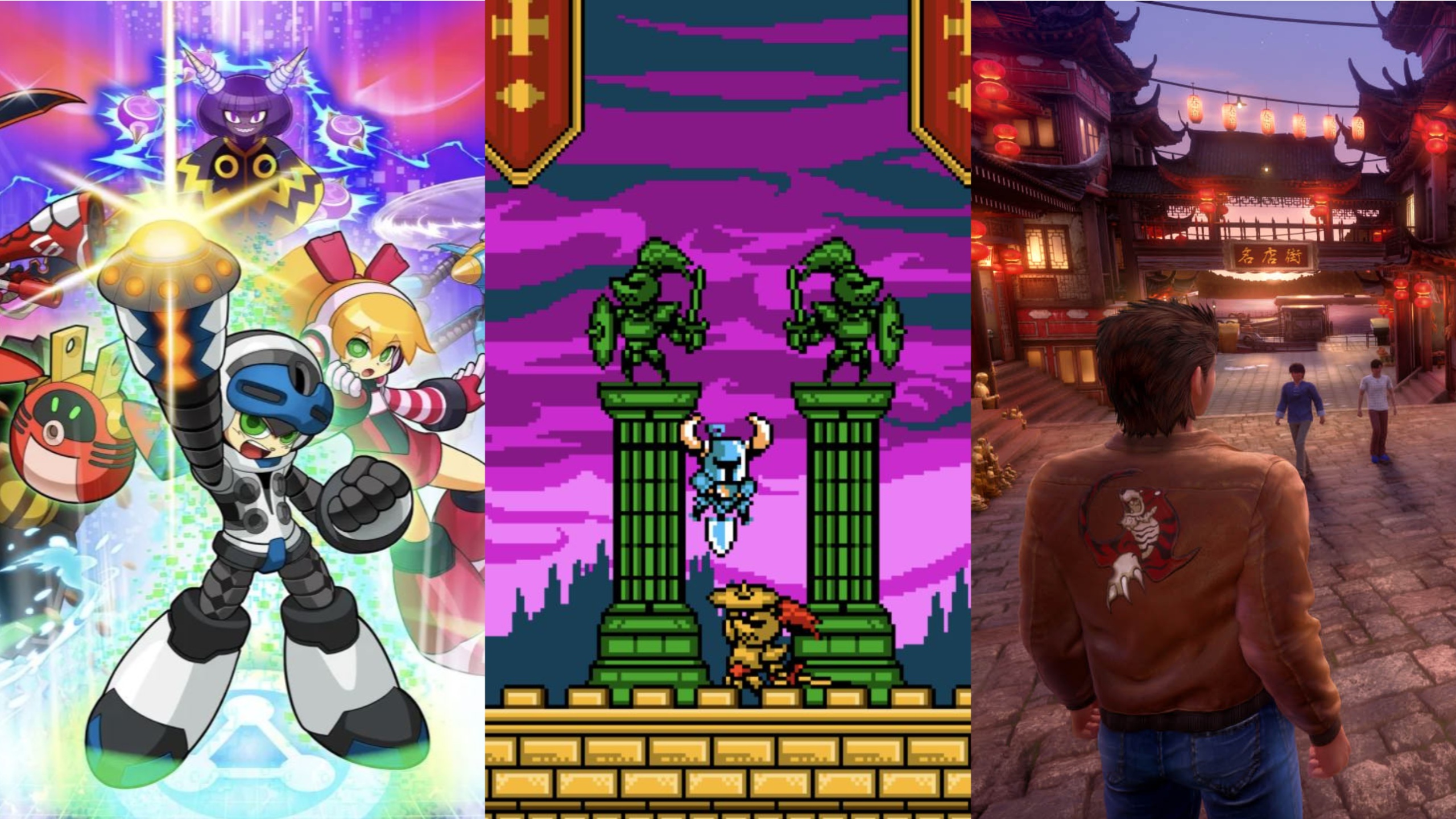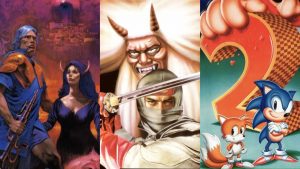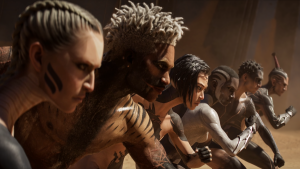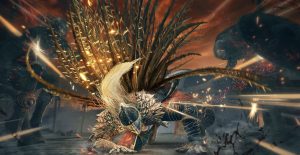
The modern video game industry primarily consists of two groups: AAA developers and indie studios. The AAA group has access to millions of dollars worth of funding and large development teams, while indie companies generally have smaller budgets and crews. While some indie organizations can receive an injection of cash from publishers, these days many studios turn to Kickstarter.
Kickstarter is arguably the most popular site that lets potential patrons vote with their wallets. If someone sees something they like, they can give it some money and bring it to life. The site has resulted in more than its fair share of noteworthy projects, including the Gloomhaven board game series and the amazing show The Legend of Vox Machina. However, Kickstarter is also home to just as many duds, such as the Skarp Laser Razor and the OUYA. Video games are no exception, as the site has played host to some of the best games you’ve ever heard of and possibly played, and also some of the worst.
The Best Kickstarter Games
Shovel Knight
While most contemporary video games try to push the limits of modern graphics hardware, game world systems, and data storage spaces, some are more concerned with nostalgia. Titles such as Shovel Knight aim to simulate games from a simpler time when sprites were 8-bit and levels were 2D. Beyond its many throwbacks, Shovel Knight is just a fantastic game.
Yacht Club Games launched the Kickstarter campaign for Shovel Knight on March 14, 2013. The studio promised a polished platformer that played, looked, and sounded like the games many people grew up with on the NES. Needless to say, the studio succeeded. Shovel Knight went on to win numerous game awards, including The Game Awards’ “Best Independent Game” and IGN’s “Best Platformer.” Moreover, the game’s mascot, the titular Shovel Knight, became the face of what indie gaming could achieve.
Also, like many other superb indie titles, Yacht Club Games went above and beyond what they promised. They originally planned a game mode that would let players control bosses in Shovel Knight levels, but instead, they developed four wholly new campaigns featuring bosses, each with their own narratives and movesets.
Undertale
There is no right way to start a career in game development, but many creators agree that developing mods is one of the best. Robert “Toby” Fox got his start in 2008 by modding Earthbound, and now he’s a household name thanks to Undertale.
The Undertale Kickstarter campaign launched on June 24, 2013. The project hooked audiences with a simple premise: The game was a traditional RPG “where one has to get hurt.” Not only did Fox raise the money needed for his game, but he blew backers away. Gamers loved the novel combat system that mixes classic turn-based battles with shoot-em-up sections, the colorful characters, and the deep story that deconstructs many RPG and general gaming traditions.
And since Fox is also known for his video game compositions, Undertale’s soundtrack is second to none. Undertale proved so successful that Robert Fox managed to start developing a follow-up, Deltarune, without the need for a public funding campaign.
Bloodstained: Ritual of the Night
Castlevania is one of Konami’s most popular franchises, thanks in no small part to the success and influence of Castlevania: Symphony of the Night. That game helped popularize the Metroidvania genre, and many people associate the title with Koji Igarashi. If anyone could reinvigorate the Metroidvania scene for the modern age, it was him.
Bloodstained: Ritual of the Night‘s Kickstarter campaign launched on May 11, 2015, and Igarashi laid out his plans for the game. Bloodstained was going to be the spiritual successor to Symphony of the Night. That was all he promised, but given the legacy of Symphony of the Night, that was all audiences wanted. Igarashi’s team delivered a fantastic game with tons of areas to explore, oodles of loot, and the smooth gameplay that made Metroidvanias popular to begin with.
While Igarashi has yet to provide a sequel to Bloodstained: Ritual of the Night, his team has gone above and beyond what was initially promised and is still supporting the game with new characters and modes even to this day.
Divinity: Original Sin 2
Larian Studios lit up the CRPG community when the company announced it was developing Baldur’s Gate 3. When the game was finally released, it reached an even wider audience thanks to the sheer quality of the epic experience. Baldur’s Gate 3 is arguably the company’s most popular title game to date and a solid “Game of the Year” contender. And we have Divinity: Original Sin 2 to thank for all of it.
The Divinity: Original Sin 2 Kickstarter project launched on August 25, 2015, as a sequel to Larian’s previous CRPG, Divinity: Original Sin (which was also the result of a Kickstarter campaign). Original Sin 2 was proposed as an immersive RPG that would allow players to use various interwoven systems to unlock new possibilities. Combat would rely on elemental interaction, players were encouraged to use novel tactics that wouldn’t work in other RPGs, and quest progression would depend on both player choices and character backgrounds.
Larian achieved all this and more, and Divinity: Original Sin 2 was nominated for and won numerous awards, including PC Gamer’s “Game of the Year” and Gamescom’s “Best Role-Playing Game.”
Hollow Knight
Dark Souls changed the video game industry. Many studios tried to ape the game’s challenging difficulty and dark mysterious world with mixed results. Some companies even tried adapting the Soulsborne formula to other genres and even camera perspectives. Despite some of its variations on that concept, Hollow Knight is one of the most successful examples of a title that followed that trend.
Team Cherry’s Hollow Knight Kickstarter campaign launched on November 18, 2014. The game was touted as challenging Metroidvania brought to life with “traditional 2D animation,” and gamers immediately fell in love with it. Players came for the polished gameplay and stayed for the enigmatic characters and world where every environment and interaction told a story.
While the Hollow Knight’s funding broke many stretch goals, Team Cherry met every single promise save one: A second playable character. Since the game proved so successful, Team Cherry increased that promise’s scope to produce a successor title, Hollow Knight Silksong. The only problem is that the sequel is currently MIA, but given the level of polish seen in the first Hollow Knight, the wait will be worthwhile.
The Worst Kickstarter Games
Godus
The gaming community has a love-hate relationship with Peter Molyneux. While he designed monumental titles such as Populous, Dungeon Keeper, Black & White, and Fable, Molyneux has a tendency to promise game mechanics and systems that his teams cannot make. Still, many gamers have historically given Molyneux the benefit of the doubt. Well, at least they did until Godus.
On November 21, 2012, Molyneux launched Project GODUS: the Kickstarter campaign that would eventually become Godus (or Godus Wars). Molyneux described the game as a spiritual successor to his early “god game” titles like Populous and Black & White. In Godus, players would lead a society to prosperity by building houses and altering the landscape. The game launched to middling reviews, but that was only the tip of the game’s iceberg of disaster.
Most of the stretch goals and promises in the Godus campaign were left unfulfilled since several months after launch, Molyneux’s studio pivoted to a new title. The studio eventually added microtransactions to help fund further development, which went as well as you’d expect. While many gamers now distrust Godus due to its alleged mismanagement, few people were burned by Godus quite like Bryan Henderson, who won a contest to become Godus’ god among gods. One of the contest’s prizes included 1% of the game’s profits. In 2017, Molyneux admitted that the game had yet to turn a profit, and you can’t exactly give someone 1% of something that doesn’t exist.
Mighty No. 9
Just like many people view Koji Igarashi as the father of modern Castlevania, most gamers believe Keiji Inafune is the father of Mega Man. This is simply untrue. While Igarashi programmed, directed, and produced Castlevania games, Inafune was mostly Mega Man’s artist. This misconception led to one of Kickstarter’s most infamous campaigns.
On August 21, 2013, Inafune launched the Kickstarter campaign for Mighty No. 9. Much like Bloodstained: Ritual of the Night, Might No. 9 initially relied heavily on nostalgia. The game was solicited as a spiritual successor to Mega Man that would feature a transforming robot hero who could jump and slide through 2D levels and absorb his enemies’ weapons. Mighty No. 9’s campaign blasted past numerous stretch goals, including one for an animated tie-in show.
However, when the game finally launched, players tore into it for being average at best and a far cry from what was promised. The game’s poor graphics and painful launch trailer didn’t help matters. Inafune planned to have Mighty No. 9 mark the start of great things, but his plans evaporated like an anime fan’s date on prom night.
Stray Souls
While video games are a completely different medium from movies and TV shows, they can have plenty of development aspects in common. For instance, just because a famous name is attached to a video game, film, or TV series, doesn’t mean it will be any good.
Several years ago (the Kickstarter has since been removed, so I can’t get an exact date), Jukai Studio launched a crowdfunding campaign for Stray Souls. The game looked like it took heavy inspiration from Silent Hill, and the company’s CEO, Artur Łączkowski, previously worked for Bloober Team. Hopes were high for Stray Souls, especially when Akira Yamaoka, the composer for most of the Silent Hill franchise, announced he would collaborate on the project.
When the game launched, though, critics and gamers alike tore into the title. Reviews have cited glitches, poor controls, and a general lack of horror in what is supposed to be a psychological horror title. If it weren’t for Yamaoka’s compositions, audiences wouldn’t have found any redeeming qualities within Stray Souls.
Shenmue 3
Shenmue 1 and 2 are legendary titles released for the Sega Dreamcast (and later ported to other platforms). The games were praised for their open worlds, their wealth of activities, and because they pioneered many technologies and mechanics many games still use. After the failure of the Dreamcast, many gamers assumed Shenmue 2’s cliffhanger ending would never be resolved. In a way, it wasn’t.
June 15, 2015, marked the launch of the Shenmue 3 Kickstarter project. As of writing, this game received more funding than any other video game campaign via Kickstarter. Hopes were high for Shenmue 3 given its legacy and because the series’ original creator, Yu Suzuki, was at the helm. When the game released, many gamers felt it was faithful to the first two Shenmue games. Too faithful, perhaps.
Many criticized Shenmue 3 for feeling outdated, essentially being a game that looks like it was released in 2019 but plays like it was released in 1999. To make matters worse, Shenmue 3 doesn’t resolve anything — it ends on yet another cliffhanger. Shenmue 3 poisoned the Shenmue name.
The Stomping Land
The video game industry goes through fads like clockwork. Before battle royales, hero shooters, and even MOBAs dominated the landscape, survival titles were often the big moneymakers. For every polished adventure like Subnautica, gamers received five crimes against coding like The Stomping Land.
On May 7, 2013, Alex Fundora started the crowdfunding campaign for The Stomping Land. The game was supposed to be an engrossing title that put players in the role of a prehistoric man trying to survive in a world filled with dinosaurs (essentially Ark Survival Evolved without the advanced technology). When The Stomping Land launched on Steam through Early Access, though, the game was riddled with bugs, poor design choices, and a general lack of fun or uniqueness.
Admittedly, this is standard for many Early Access games, and Fundera promised to fix these issues. However, the improvements never came. In this instance, players weren’t the only people burned by those broken promises. Many developers who helped Fundora with The Stomping Land left the project, citing a lack of communication and unpaid wages. Not only has The Stomping Land become synonymous with the dangers of Kickstarter and Steam Early Access, but many people think the game was nothing more than a scam.
The post The Best and Worst Kickstarter Video Games appeared first on Den of Geek.







